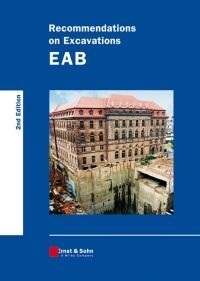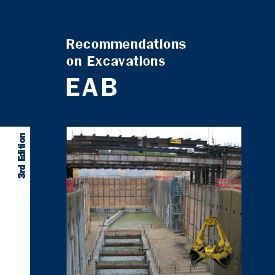About the book
The aim of these recommendations is to harmonize and further develop the methods, according to which excavations are prepared, calculated and carried out. Since 1980, these have been drawn up by the working group "Excavations" at the German Geotechnical Society (Deutsche Gesellschaft für Geotechnik DGGT) and are similar to a set of standards.
They help to simplify analysis of excavation enclosures, to unify load approaches and analysis procedures, to guarantee the stability and serviceability of the excavation structure and its individual components, and to find out an economic design of the excavation structure.
For this new edition, all recommendations have been reworked in accordance with EN 1997-1 (Eurocode 7) and DIN 1054-1. In addition, new recommendations on the use of the modulus of subgrade reaction method and the finite element method (FEM), as well as a new chapter on excavations in soft soils, have been added.



